Building on our previous exploration of American icons, where we deconstructed and reconstructed the images of JFK and Barack Obama, we now shift our focus to two of the most iconic female figures of their respective eras: Marilyn Monroe and Kim Kardashian. Both women, like the political figures before them, have come to represent something larger than life in the public imagination-Monroe as the quintessential Hollywood starlet of the mid-20th century, and Kardashian as a modern-day symbol of pop culture, beauty, and media dominance.
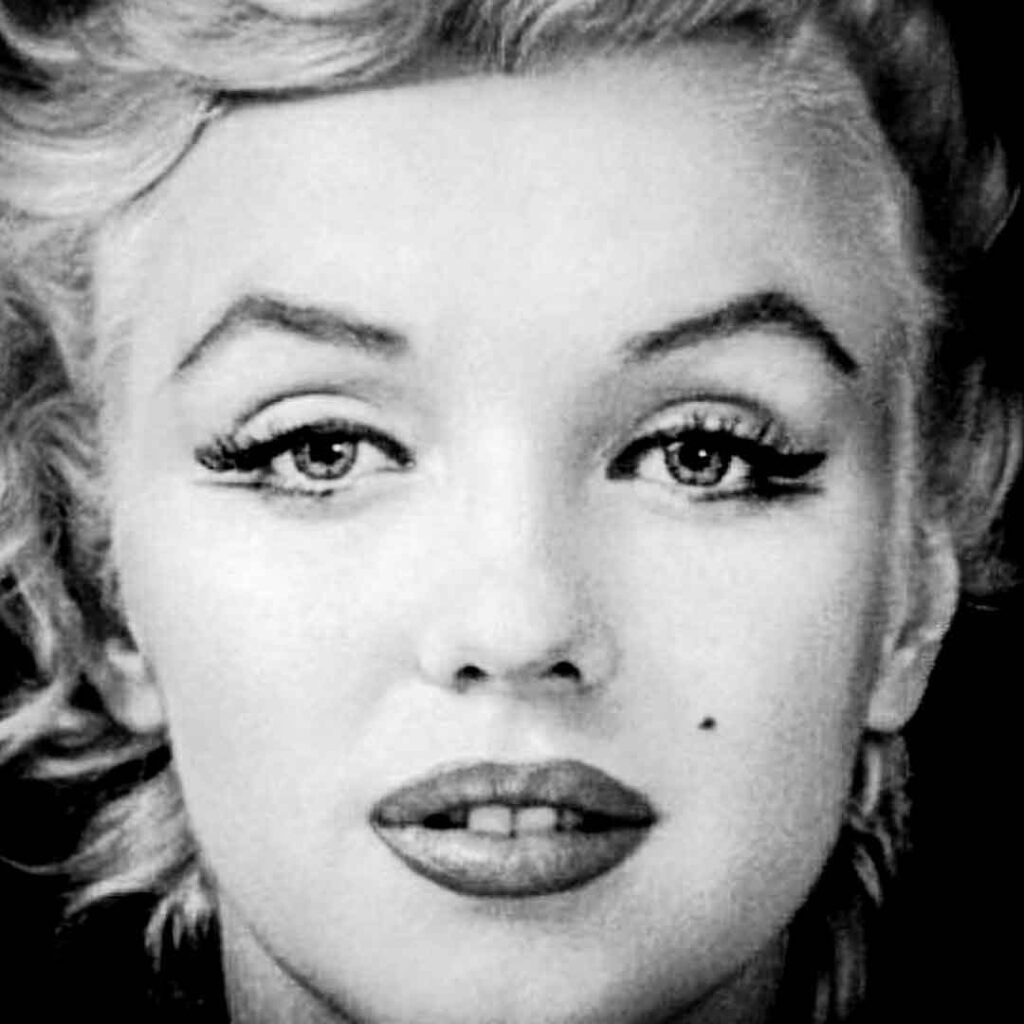
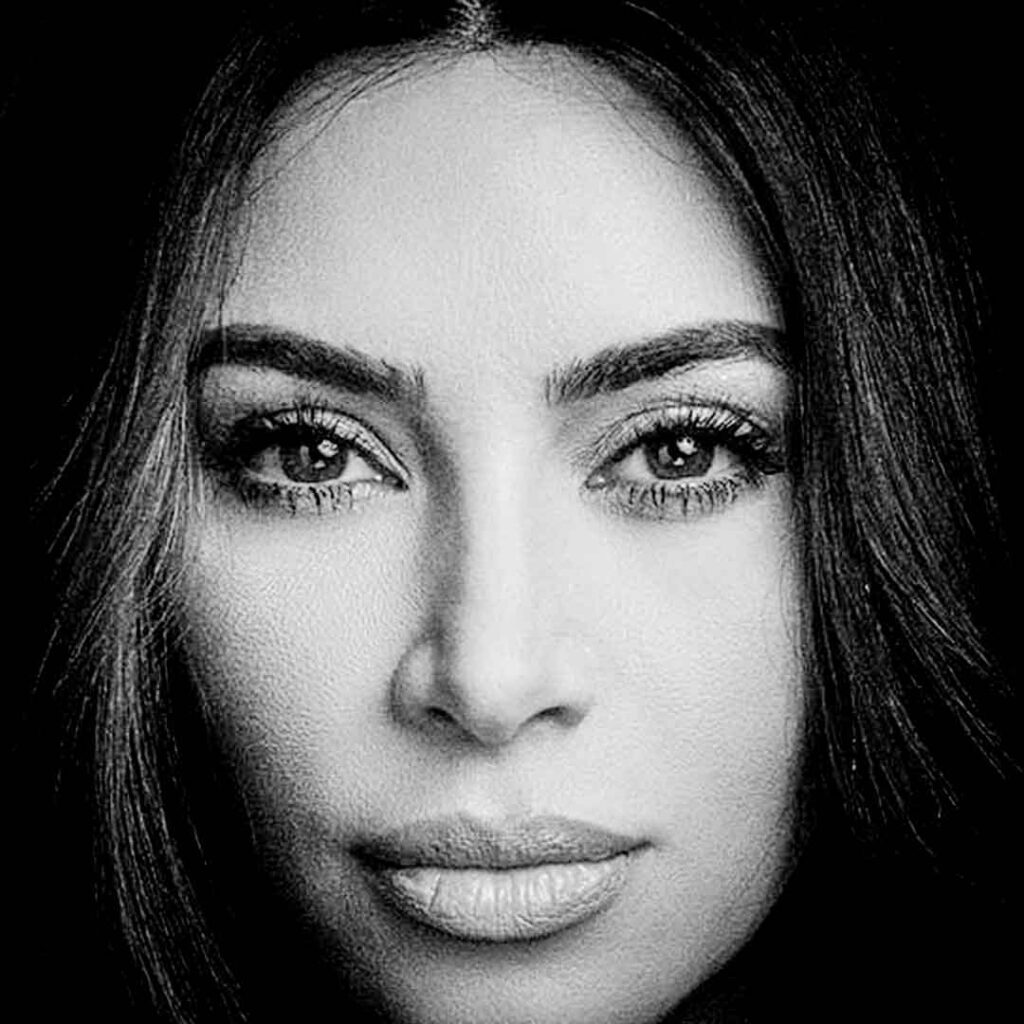
Much like our project with American presidents, this exploration delves into how both Marilyn Monroe and Kim Kardashian have been mythologized, embodying a cultural ideal that transcends their individual identities. In the same way the American political machine elevates its leaders into symbols of hope and progress, popular culture has transformed Monroe and Kardashian into icons of beauty, femininity, and fame, each representing different eras in the American imagination.
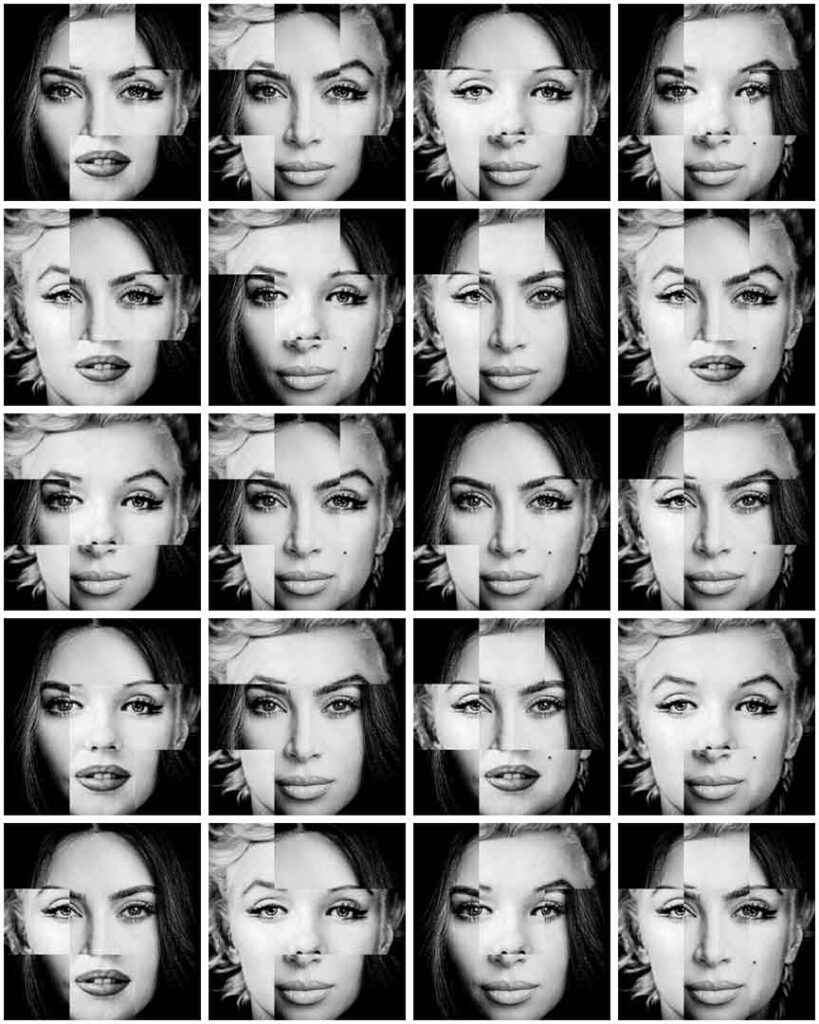
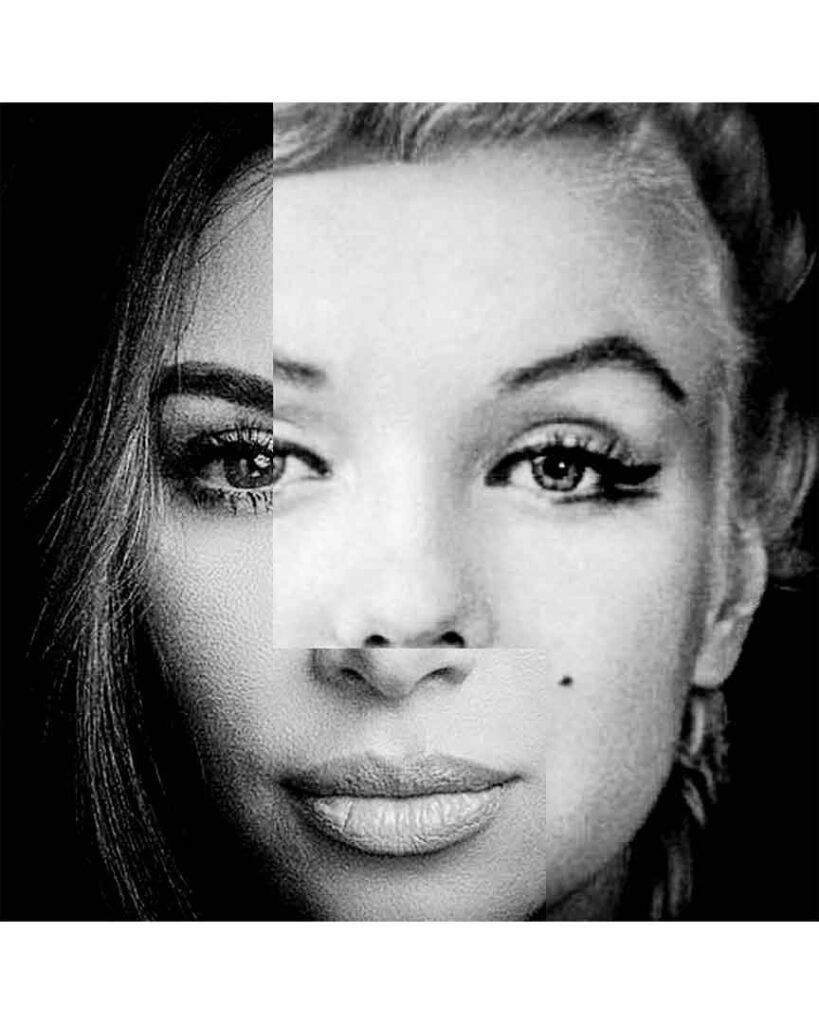
Using the same techniques of deconstruction and reconstruction that we applied to JFK and Obama, we fragmented the portraits of Monroe and Kardashian into smaller pieces, then reassembled them into composite images. These new compositions invite viewers to reconsider the myth of the “female icon,” revealing the fragmented nature of their identities. From a distance, the portraits appear whole, but upon closer inspection, the disjointed elements of fame, beauty, and idealization become clear.
This project examines the parallels between Monroe and Kardashian, who both serve as reflections of their cultural moment. Monroe, with her timeless glamour, represents the golden age of Hollywood, while Kardashian epitomizes the social media-driven, image-conscious world of today. By placing these two figures side by side, we explore the ongoing tension between the individual and the icon, and how society continuously strives to create impossible ideals of perfection and beauty.
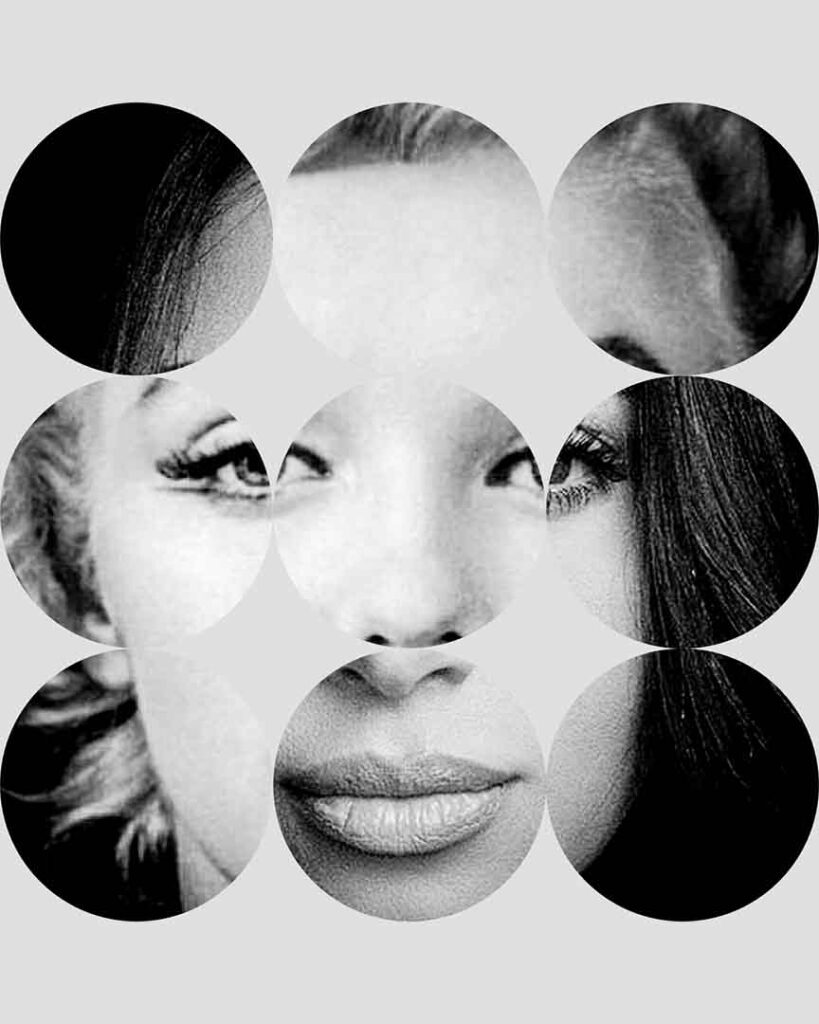
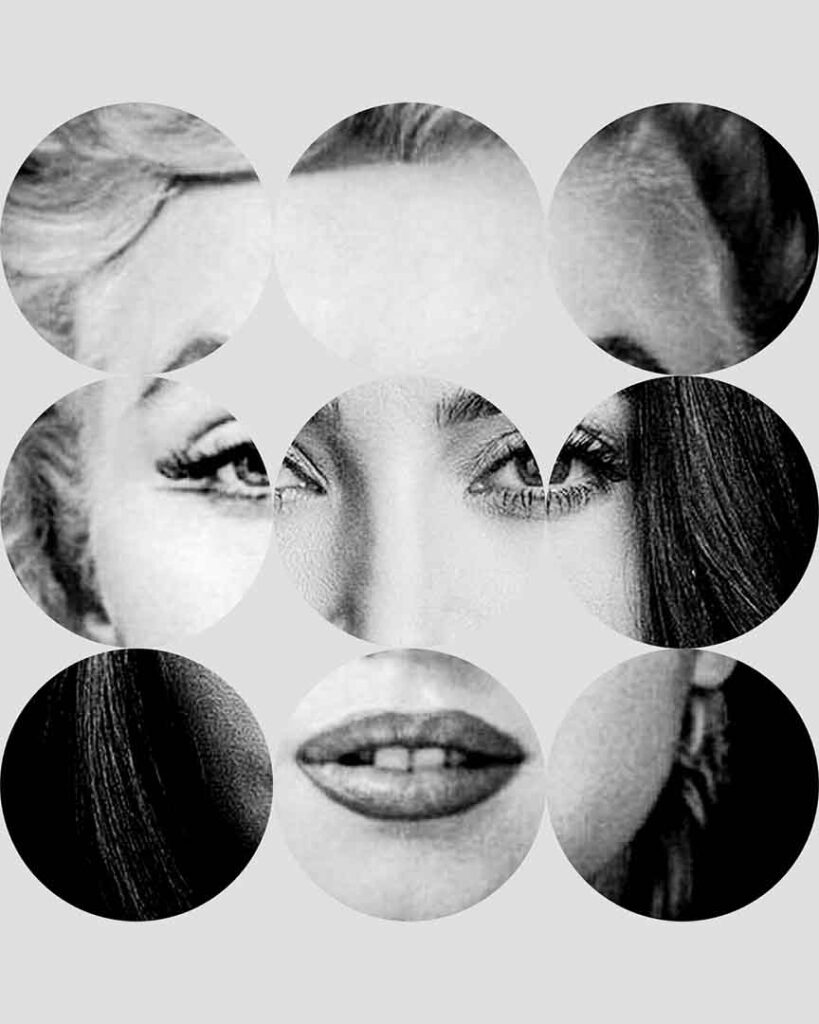
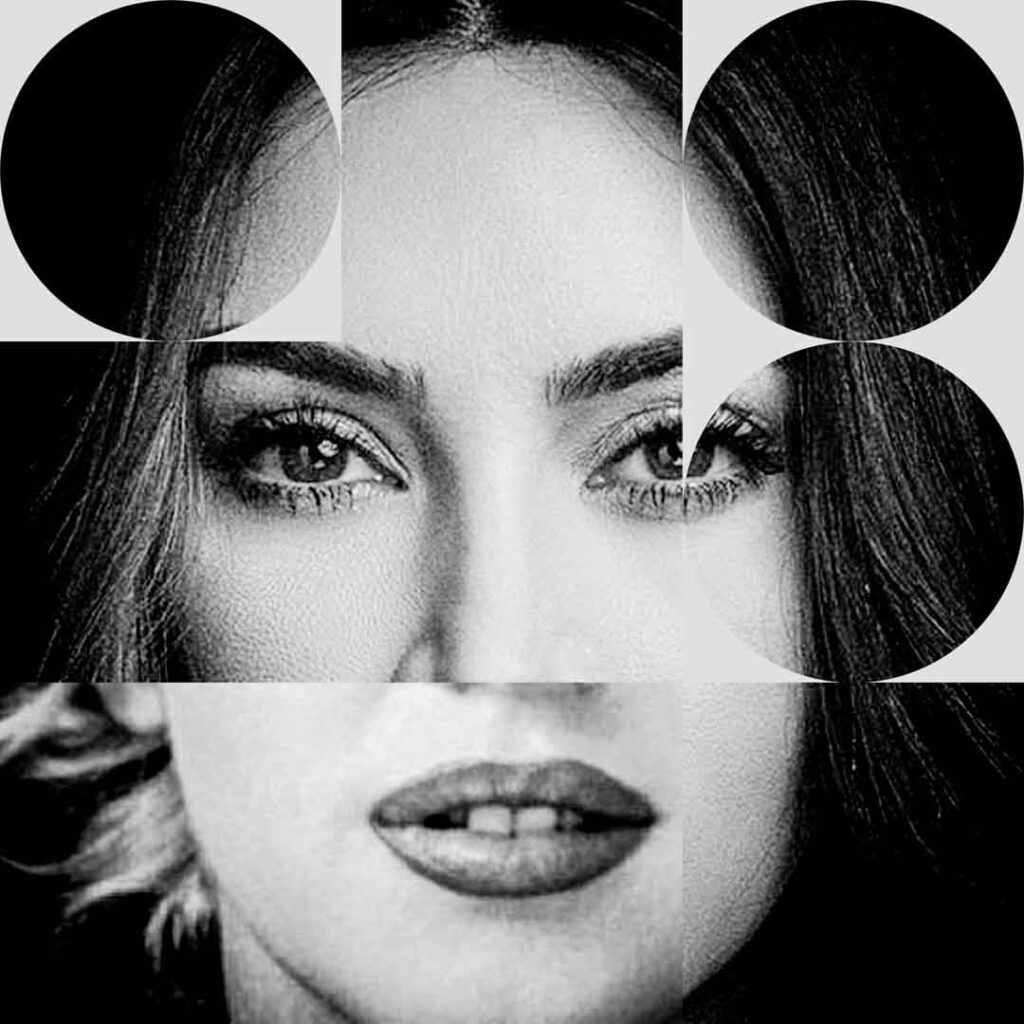
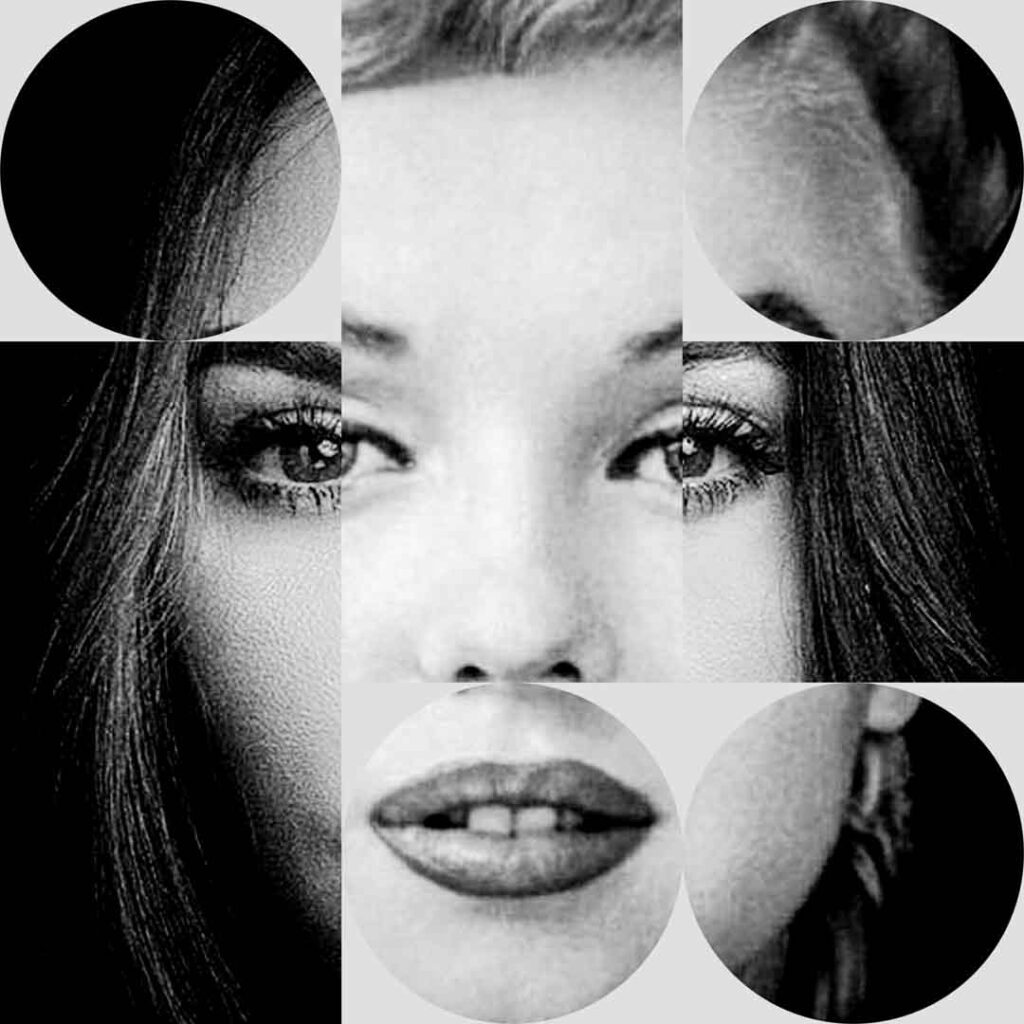
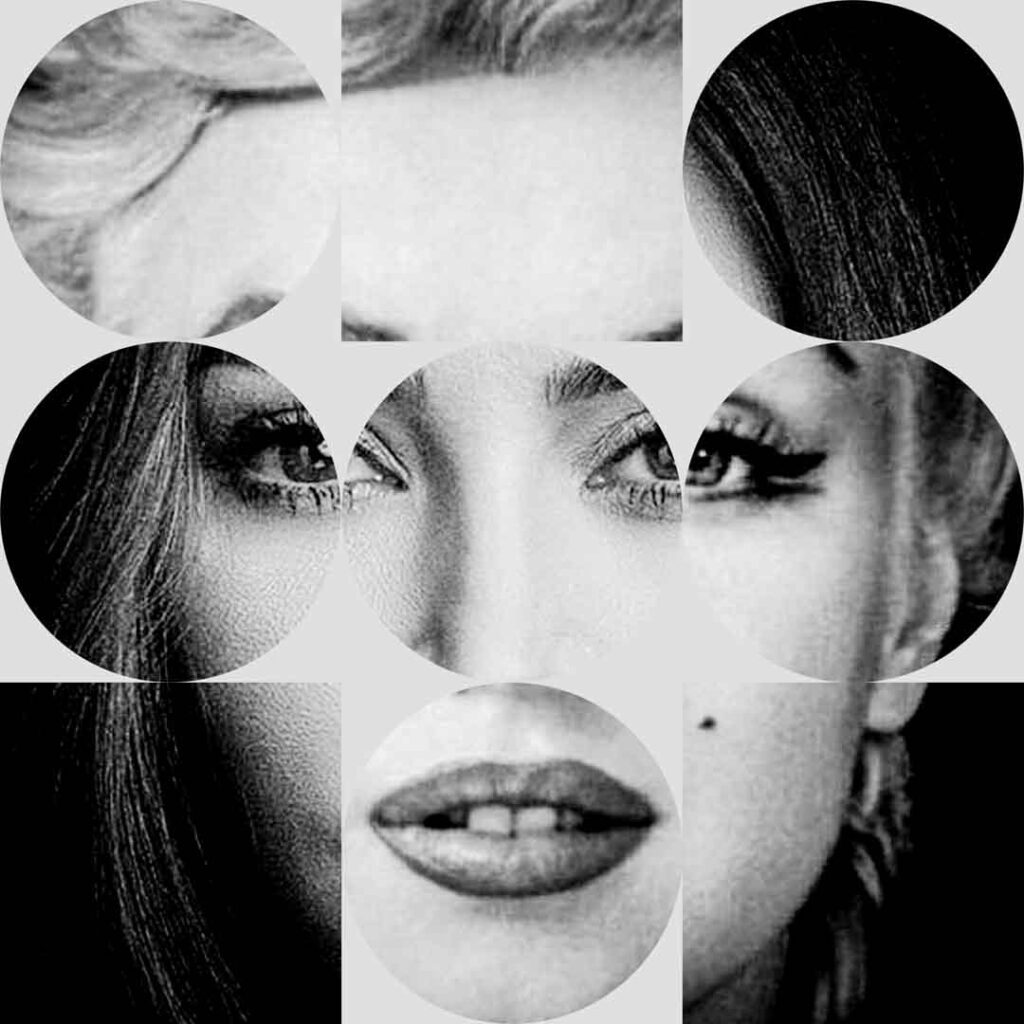
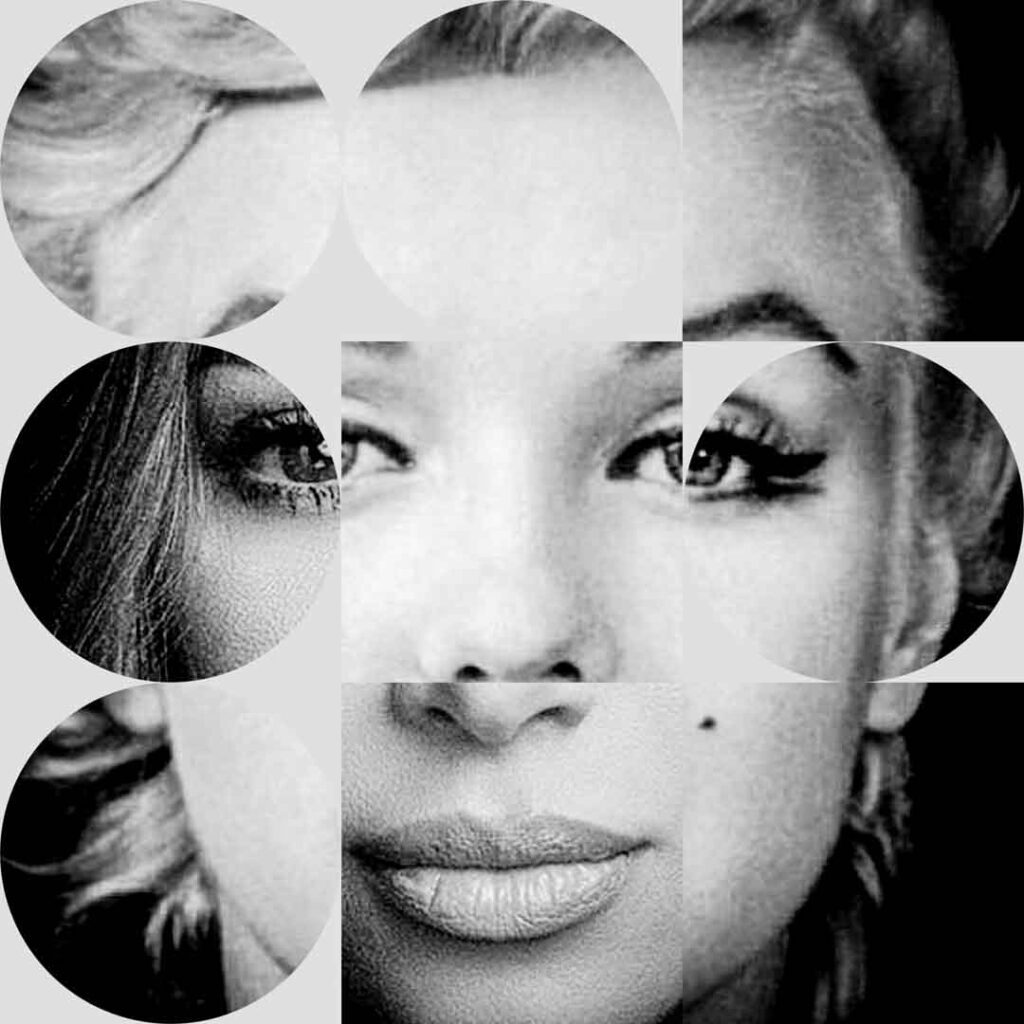
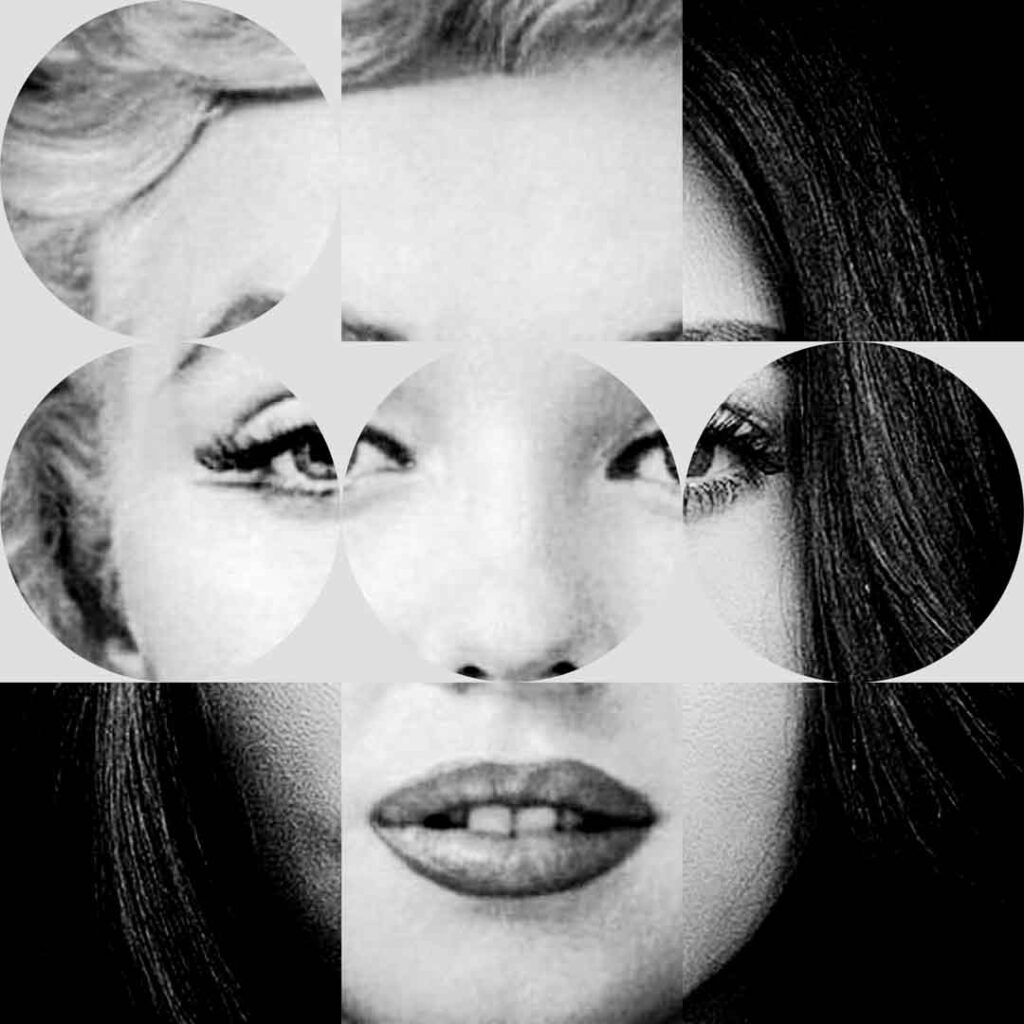
Through this work, we invite viewers to question the relentless drive to manufacture icons in popular culture, much like how we challenged the creation of “super greatness” in American politics. These manipulated images ask the viewer to see beyond the surface of fame and beauty, into the fragmented and constructed nature of cultural identity.